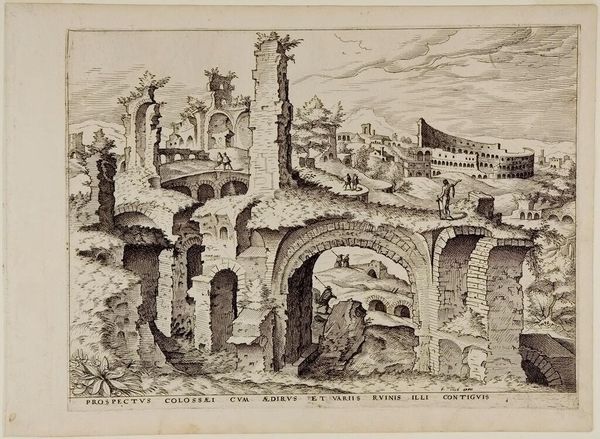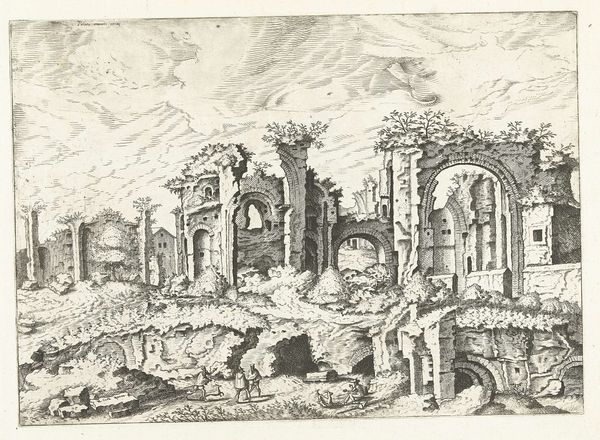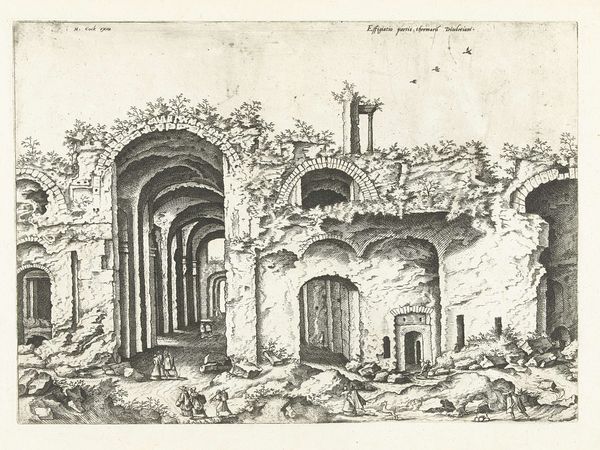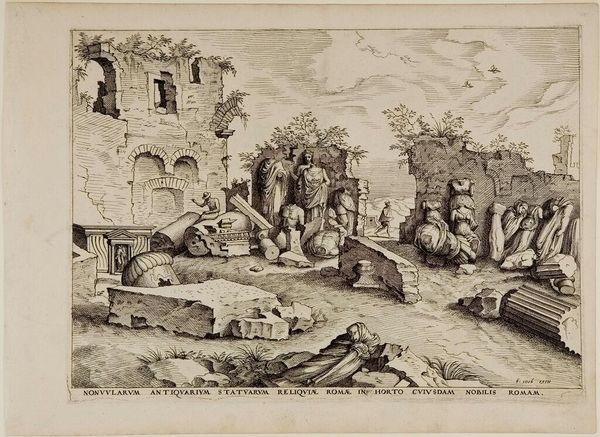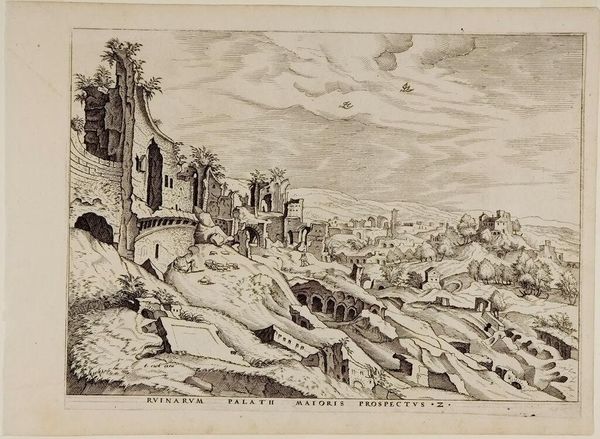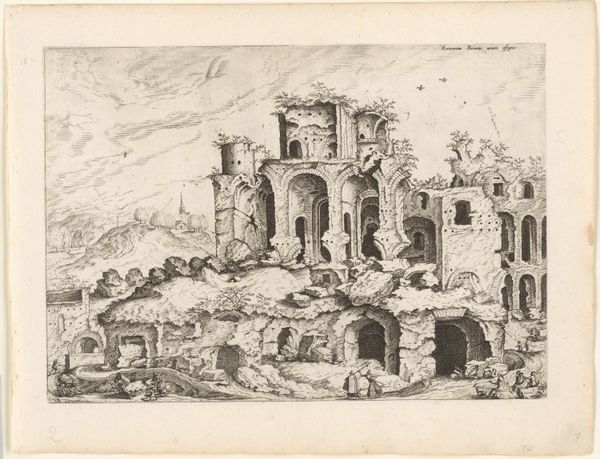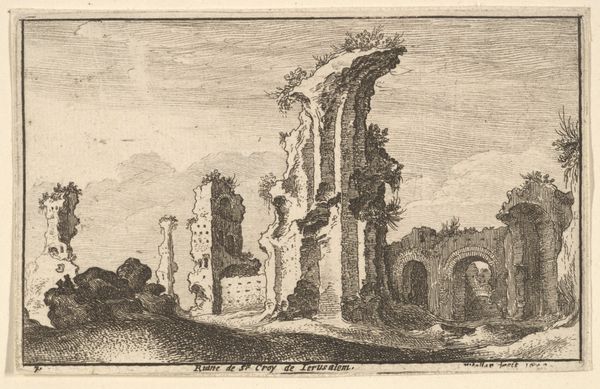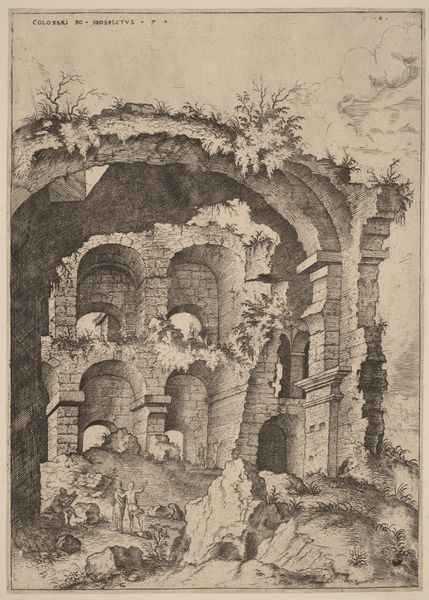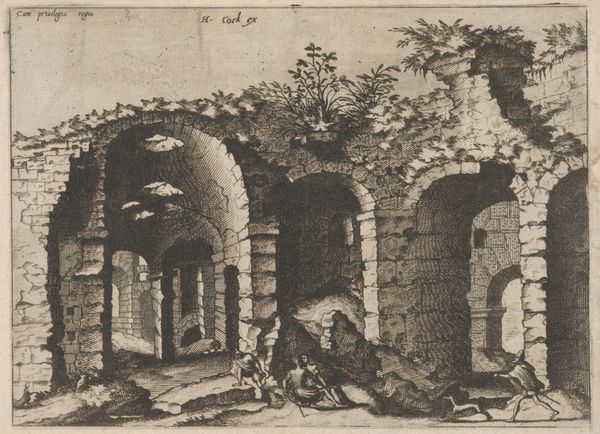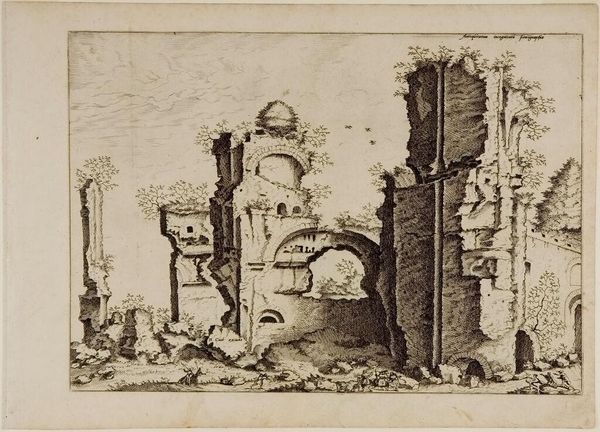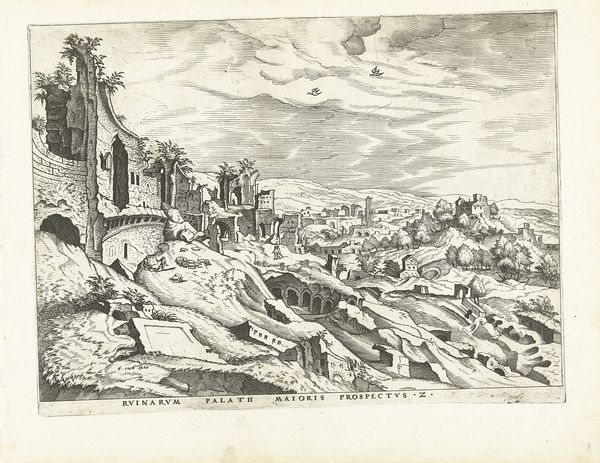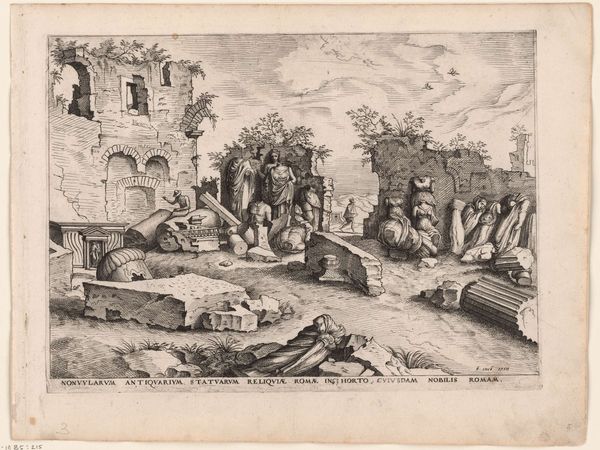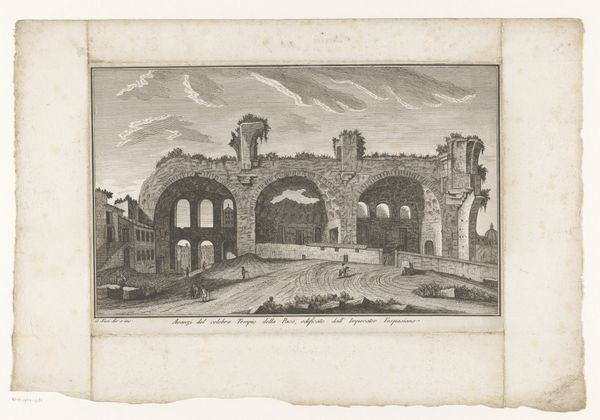
drawing, print, etching, intaglio
#
drawing
#
pen drawing
# print
#
etching
#
intaglio
#
landscape
#
perspective
#
cityscape
#
italian-renaissance
Dimensions: height 245 mm, width 325 mm
Copyright: Rijks Museum: Open Domain
Curator: This intaglio print, made using etching and engraving, is titled "View of the Colosseum with its Adjoining Horrors and Various Ruins" and is attributed to Johannes or Lucas van Doetechum. The piece likely dates from the late 16th century. What’s your immediate take on it? Editor: Well, what strikes me first is this powerful juxtaposition of the Colosseum, this icon of imperial power, against the very tangible realities of ruin and decay. It's visually quite arresting. Curator: Absolutely. Considering it's a print, let's examine the materiality. Look closely at the density of the line work, particularly in the shadows around the ruins. We see various states of ruin as they appear to exist within the built environment of the time period, how labor and materials decompose over a time through cycles of weather. Editor: I agree. And this process, of taking something grand and monumental like the Colosseum and setting it against images of its destruction is compelling, I feel. This ruin signifies a turning point and collapse from an imperial project towards a landscape that represents themes around a collective history and politics of that specific moment in time. Curator: Precisely. Consider how the technique emphasizes line and form, a deliberate artistic choice reflective of printmaking conventions of that period. There's an inherent tension between the reproductive nature of printmaking and the unique skill invested in its production. Editor: Right. In seeing its image reproduced again, are we allowing an ancient ruin to exist today, or are we complicit in a process of decay. This is just one singular viewing point. Curator: Interesting thought. Also, think about the labor of the printmakers, the Doetechums, and their skill in manipulating these materials—metal plates, acid, and ink. Their artistic labor mediates our connection with antiquity. Editor: The perspective of those creating the work has me thinking again about the view that this evokes. We as viewers engage with history from our own situated contexts. Curator: So well articulated. When we scrutinize "View of the Colosseum," we're not merely looking at a historical image but interrogating the processes and labor involved in its creation and circulation. Editor: Indeed. Thinking through the complex layering of historical narratives onto current material conditions, we expose some fundamental insights around power, loss, and human relationships. It makes for more considered engagements within a present space, I hope.
Comments
No comments
Be the first to comment and join the conversation on the ultimate creative platform.
